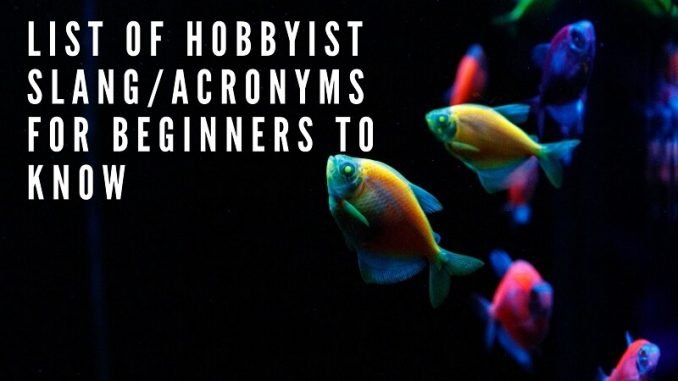
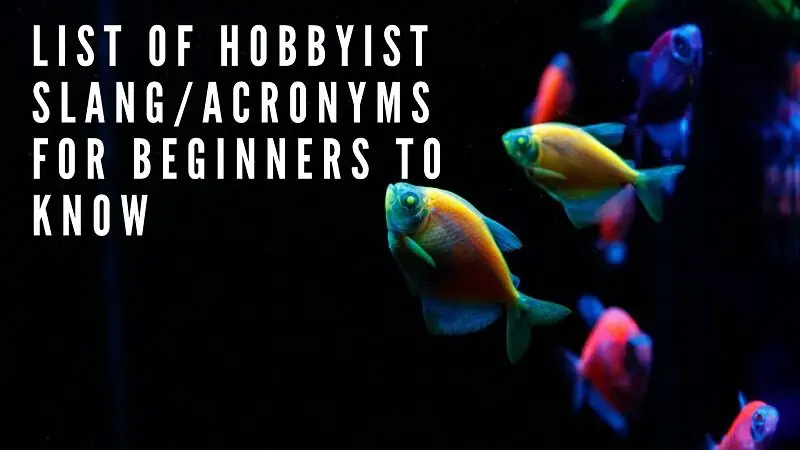
Have you ever been to an aquarium shop and felt like the salesperson is talking a completely different language? Have you tried to look something up about your fish online and not understood a single word? We have all been there, so be reassured you are not alone in trying to figure out all things aquarium. Since the aquarium language is so specific you will find it is fluently spoken and understood among the experienced aquarium hobbyists.
We have put together this glossary that includes important slang words and acronyms that will help you understand a little better what is being written or spoken. These will certainly assist you greatly in your aquarium fish keeping journey.
- A:Short for amp which is an electrical current measurement.
- Acan Lord:A type of coral with the scientific name of micromussa lordhowensis.
- Acclimation: The slow process of introducing fish to a new environment.
- AEFW: Acropora-Eating Flat Worm. This is a species of flatworm sometimes found in aquariums.
- Aggressive fish: These are fish that are best kept separate from other species of less aggressive fish. Aggressive fish need to be kept alone in a tank or with other compatible fish.
- AIO: Stands for All-In-One. This term is used to describe an all-in-one system that contains all of the aquarium equipment ready to use.
- Algae Reactor: A type of refugium.
- Anoxic: An area of the tank that contains low oxygen levels.
- Aquascape: Process of arranging and decorating plants and accessories in the aquarium.
- Assertive Fish: Dominant fish that are territorial.
- ATO: A system that automatically replenishes the water in your tank after it evaporates.
- AWC: Aquatic Water Change.
- Base Rock: A plain, dead rock that is used as decoration or for fish breeding purposes.
- BB: A Bare Bottom tank is one that does not contain any substrate.
- Bean: A type of drain.
- Big 3: Refer to the three most important factors of keeping a reef tank healthy, which are magnesium levels, calcium, and alkalinity.
- BioWheel: This item is often attached to a filter and encourages the growth of beneficial bacteria.
- Bonded Pair: A pair of fish that are showing breeding potential.
- BPM: Bubbles Per Minute.
- Brine Shrimp: Very small crustaceans that are a great food source for some aquarium fish.
- BTU: British Thermal Unit.
- Bubble Nest: A nest made out of bubbles that contain fish eggs, which is held together by fish saliva.
- Calcium Reactor: Balances alkaline.
- Canister Filter: An external filtration device.
- Chaeto: A type of microalgae.
- Chiller: Special equipment used to cool down the water temperatures in the aquarium.
- Community Tank: A tank full of a number of fish species that live together in harmony.
- Cycling: An important process in which nitrifying bacteria grows and restores biological filtration.
- Detritus: Feces or dead fish found in the water.
- Detritivore: Fish or other organisms that feed on detritus.
- DOM: Dissolved Organic Matter.
- Drip Loop: A system that keeps water from dripping onto electrical circuits.
- DT: Short for Display Tank a name for the main fish tank.
- Euro brace: A brace that stops acrylic aquariums from bowing over time.
- Fish Stock Limit: A maximum number of aquarium fish that are safe to keep in the tank at any given time.
- Filter: Removes water impurities.
- Fry: Baby fish that have recently been born or hatched from the eggs.
- FW: Freshwater.
- GH: General hardness, referring to water hardness.
- GPD: Gallon Per Day.
- GPH: Gallon Per Hour.
- HA: Hair Algae.
- Hydrometer: Device that measures gravity and salinity of the water.
- Ich: A parasitic disease.
- Internal Filter: Filters that work from inside the tank.
- LED: Light Emitting Diodes.
- Light Meter: Measures light intensity.
- Live Barer: Fish that give birth to live fish instead of eggs.
- Mechanical Filtration: A filtering system that physically removes debris from the aquarium.
- Nitrate: Formed at the last stages of the tank nitrogen cycle
- Nitrite: Byproduct of the nitrogen cycle. It is toxic to fish.
- Nitrogen Cycle: Process of converting the ammonia from fish waste into less harmful nitrate and beneficial bacteria.
- Omnivore: Fish and other organisms that eat both animals and vegetation.
- OC: Open Channel – this is a tube that has both water and air flowing through it.
- pH: A way of measuring acidity or alkalinity of the water.
- Plankton: Organisms that are found both in saltwater and freshwater, suitable food for fish.
- PPM: Parts Per Million.
- Powerhead: Creates currents in still and stagnant aquariums.
- Protein Skimmer: A special filter that removes organic waste from saltwater tanks, which allows an increase in oxygen levels and removes excess supplement residue from the water.
- QT: Quarantine Tank.
- Quarantine Tank: A tank in which fish are kept for isolation, usually during medicating treatments.
- Refugium Tank: A tank extension that aids in cycling the tank, create stable water conditions, and can be an isolation spot for fry and small fish.
- RO: Reverse Osmosis, is a purification process for saltwater tanks.
- RP: Return Pump.
- SAL: Salinity.
- Shy Fish: Fish that hide away from others.
- Siphon: Device that removes a small portion of the water from the tank, typically used during water changes.
- Slime Coat: A slimy substance that protects the fish scales when swimming.
- Specific Gravity: Measures salt content and density in aquarium water.
- Substrate: This substance is found on the bottom of the aquarium tank, found in the form of sand and gravel, both popular aquarium substrates.
- TDS: Total Dissolved Solids.
- TOTM: Tank Of The Month.
- TTM: Tank Transfer Method. A method of isolating fish to prevent or cure disease.
- Turn Over: How fast water leaves and enters the tank.
- UGF: Under-Gravel Filter.
- UV: Ultraviolet.
- V: Volt.
- VHO: Very High Output when referring to fluorescent light.
- Water Change: A process in removing the old aquarium water and replace it with clean water.
- Wet/Dry Filters: A special filtration system that exposes beneficial tank bacteria to wet and dry conditions.
- WQ: Water Quality.
Now you have the most common slang words and acronyms used amongst aquarium hobbyists. We hope this glossary has cleared up a few unanswered questions!

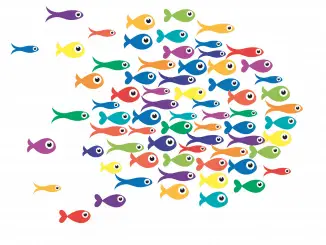

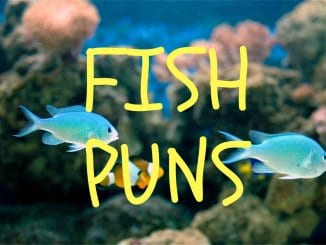
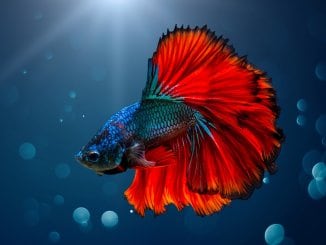

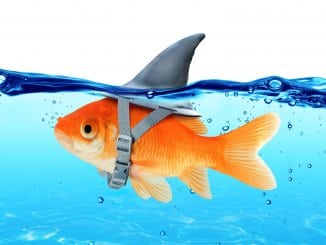

Be the first to comment